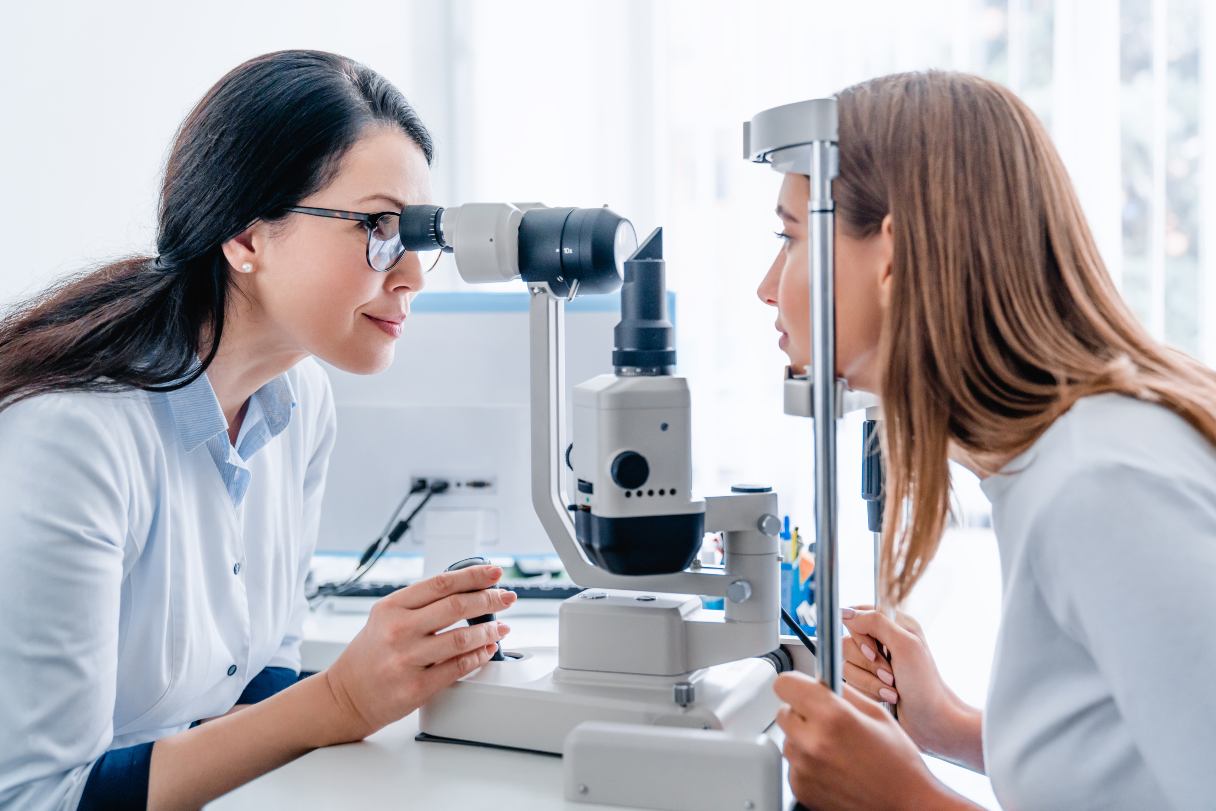Ocular migraines, also called retinal migraines, can cause temporary visual disturbances that range from blurring to blind spots or even full vision loss in one eye. Though not life-threatening, the symptoms can be frightening the first time you experience one. And since the same symptoms can also be caused by other serious conditions, getting a diagnosis as soon as possible is crucial.1
Learn more about ocular migraines — including causes and triggers — and how they’re diagnosed and treated.
What Is an Ocular Migraine?
Ocular migraine is medically referred to as retinal migraine. It’s a rare disorder that causes temporary vision disturbances in one eye. Anyone can get an ocular migraine. They can start as early as age 7, but they most often begin when a person is in their 20s and peak when they're in their 40s.1
People sometimes mistake ocular migraines for typical, more common migraines with visual aura, but they’re not the same. Ocular migraines affect only one eye and can last anywhere from five minutes to an hour. The visual symptoms are sometimes followed by a headache, but not always.1
Symptoms of Ocular Migraine
The symptoms of an ocular migraine can happen a few times throughout the day and include:1
-
Seeing twinkling or flashing lights
-
Blurry vision
-
Shaded, white or black spots in your vision
-
Full loss of vision in the affected eye
-
A headache within 60 minutes of the start of visual symptoms
Ocular Migraine Causes and Triggers
The cause of ocular migraines isn't known, but having certain medical conditions — such as lupus, atherosclerosis or sickle cell disease — can put you at a higher chance of getting them.1
Ocular migraine triggers are the same as those of other types of migraines, including:1
-
Stress
-
Dehydration
-
Some types of hormonal birth control
-
High altitudes
-
Low blood sugar
-
High blood pressure
-
High body temperature or overheating
-
Smoking
-
Bending over
-
Alcohol and caffeine
Diagnosing Ocular Migraines
Sudden vision loss can be caused by serious conditions, including stroke. You should go to the nearest hospital for emergency care if you lose part or all of your vision in one or both eyes or if your vision changes are accompanied by other signs of stroke.1
There is no specific test for diagnosing ocular migraines, but if you see a healthcare professional during an attack, they may be able to observe the restricted blood flow to your eye.2
Ocular migraines are usually diagnosed using your symptoms, medical history and a thorough physical examination, including a neurological and vision test to help rule out other causes of your symptoms. You will need a comprehensive eye exam with dilation. You may also be referred to an ophthalmologist and a neurologist who specializes in headaches for tests and treatment.3
Treatments for Ocular Migraines
Because episodes don't last long, treatment for ocular migraines is aimed at prevention rather than stopping an episode.1 Preventative measures and therapies are the same as those used to treat other types of migraines.4 Doctors usually recommend lifestyle changes to prevent ocular migraines before moving on to medical treatments.1
Let’s look at the treatment options.
Lifestyle changes
The following lifestyle changes may help prevent ocular migraines:5
-
Avoid dietary triggers, like alcohol and caffeine.1
-
Don’t smoke.1
-
Make sure to drink enough water to avoid dehydration.
-
Manage any preexisting medical conditions, such as high blood pressure.1
-
Eat regular meals throughout the day to keep your blood sugar levels steady.
-
Get enough quality sleep.
-
Engage in regular exercise.
-
Find ways to relax and keep your stress levels down.
-
Keep a journal to track your symptoms, triggers and treatments.
Medications
Several types of medications are used to treat ocular migraines. Your doctor may recommend one or a combination of these medications if lifestyle changes don’t help:4
-
Aspirin
-
High blood pressure medications
-
Antidepressants
-
Anti-seizure drugs
BOTOX® injections
BOTOX injections are another option that may be used to treat ocular migraines. The injections contain onabotulinumtoxinA — the same ingredient as BOTOX Cosmetic — and are approved by the FDA for the treatment of chronic migraines.6
BOTOX migraine injections cost between $300 and $600 per treatment and may be covered by insurance, though you may need to meet certain criteria for approval, such as having tried at least two other treatments first.6
Acupuncture
Acupuncture is an alternative therapy that has been shown to reduce the frequency of migraines. Some people use acupuncture alone, but it can also be used alongside other ocular migraine treatments. It may be covered by some insurance plans if it’s considered medically necessary and prescribed by a licensed healthcare professional.7
Without insurance, an initial acupuncture session costs between $40 and $85, and routine visits cost between $35 and $70. Some providers may offer discounts.8
If you're experiencing ocular migraines, visit your healthcare professional to learn more about your treatment options.
Frequently Asked Questions About Ocular Migraines
Do you still have questions about ocular migraines? Here are answers to some commonly asked questions.
CareCredit Credit Card Financing for Ocular Migraines
Whether you're paying for eye surgery or getting an eye exam, the CareCredit credit card can help you pay for care where your insurance leaves off.* Use our Acceptance Locator to find a vision specialist near you that accepts CareCredit. Continue your wellness journey by downloading the CareCredit Mobile App to manage your account, find a provider on the go and easily access the Well U blog for more great articles, podcasts and videos.
In addition to vision care, you can also use your CareCredit credit card for dentistry, cosmetic, pet care, hearing, health systems, dermatology, pharmacy purchases, spa treatments and so much more within the CareCredit network. How will you invest in your health and wellness next?
Author Bio
Adrienne Santos-Longhurst is a writer who has been covering health and lifestyle for almost two decades. Her work has appeared in Healthline, Insider, Medical News Today and more.








